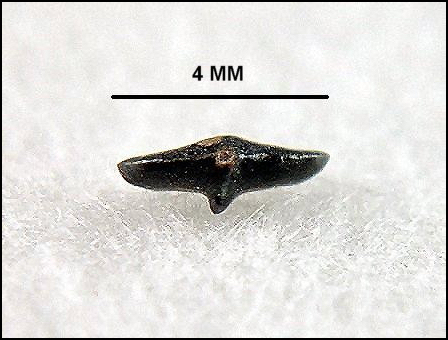|
Hybodont Shark Age - Cretaceous Commonality - Common? The extinct hybodont sharks of the genus Lonchidion were extremely small, reaching a length of about 6 inches. The fossil records indicate that most of the sharks in this genus inhabited freshwater. Unlike most species of Lonchidion, L. babulskii is found in marine sediments (Upper Campanian). The teeth of L. babulskii are very different from those of Hybodus, they are small, averaging less than 5 mm across. The teeth are low and laterally elongated with a distinct protuberance on the enamel surface and a well developed crest on the crown. It is rare to fine teeth with the roots intact. Screening the silt with a fine meshed screen is usually required to find specimens of this size. Along with the teeth, dorsal fin spines and cephalic claspers can also be found. The claspers, which are only present on the male was used to hold the female during mating.
occlusal view Monmouth County, NJ.
Labial, lingual and side views.
Very rarely does the root fossilize. This is not
isolated to NJ, but
|

